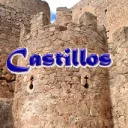• CATEDRAL DE CUENCA
 Este templo fue la primera catedral gótica que se construyó en Castilla, y con posterioridad ha tenido numerosas transformaciones que la ampliaron desde el S. XV.
Este templo fue la primera catedral gótica que se construyó en Castilla, y con posterioridad ha tenido numerosas transformaciones que la ampliaron desde el S. XV.
Los puntos más interesantes de la visita:
- La capilla del Pilar, fundada por el canónigo Diego Lujando en 1769, en sus paredes están representados la Aparición de la Virgen a Santiago en Zaragoza, San Julián, la Virgen con el Niño y el Milagro de Calanda (Zaragoza) mediante relieves.
- El Coro, que dispone de una reja con crestería de Hernando de Arenas del siglo XVI. Su sillería data del S. XVIII con 47 sitiales en dos filas, en estilo neoclásico talladas por Manuel Gasso.
- El triforio, discurre por los laterales de la nave central, y lo recorre una galería con balaustradas con tracería caladas y arcos trilobulados con crestería con decoración floral.
- En la doble girola levantada en la segunda mitad del S. XV por Hannequin de Bruselas y su hermano Egas Cueman, se abren capillas a ambos lados, junto con altares, además de los sepulcros…
- La sala Capitular fue construida a principios del s. XVI, añadiéndose en tiempos del obispo Diego Ramírez de Villaescusa (1518-37) la magnífica portada renacentista.
- La capilla de los Caballeros fundada por García de Albornoz y su esposa Teresa de Luna en el S. XIII de dos tramos. Refundada por Gómez Carrillo de Albornoz.
- La Capilla Mayor, que su perímetro se encuentra cerrado por tres rejas. El altar Mayor es obra de 1752 en estilo neoclásico, según proyecto de Ventura Rodríguez. Esta construido en mármol de Carrara y jaspe, con la Virgen con el Niño rodeada de ángeles, sobre ella el Padre Eterno y a los lados San Joaquín y Santa Ana
- La Sacristía Mayor, diseñada por Ventura Rodríguez con bóveda de crucería, con diversas obras de arte a demás de su retablo.
- El Claustro, construido en el último cuarto del S. XVI sustituyendo el antiguo gótico.
- Y la capilla del Espíritu Santo, reedificada en 1572 a expensas de Rodrigo Hurtado de Mendoza, como capilla funeraria de su linaje. (los marqueses de Cañete).
Puedes descargarte el PDF con información, planos, fotos y contactos.
Pulsar sobre la imagen con el botón derecho y guardar como…para descargar y llevar el archivo PDF en tu tablet o smartphone.
-
CATHEDRAL OF CUENCA
This temple was the first Gothic cathedral that was constructed in Castile, and afterwards it has had numerous transformations that extended it from the S. XV.
The most interesting points of the visit:
- The Chapel of the Pillar, founded by Canon Diego Lujando in 1769, on its walls are represented the Apparition of the Virgin to Santiago in Zaragoza, San Julián, the Virgin with the Child and the Miracle of Calanda (Zaragoza) through reliefs.
- The Choir, which has a grating with Hernando de Arenas crest from the 16th century. Its stallería dates from S. XVIII with 47 seats in two rows, in neoclassic style carved by Manuel Gasso.
- The triforium, runs along the sides of the central nave, and runs through a gallery with balustrades with tracería draped and arches trilobulados with crestería with floral decoration.
- In the double roundabout raised in the second half of the XV century by Hannequin of Brussels and his brother Egas Cueman, chapels are opened on both sides, along with altars, in addition to the tombs …
- The Chapter room was built in the early s. XVI, adding in the days of the bishop Diego Ramirez de Villaescusa (1518-37) the magnificent Renaissance cover.
- The chapel of the Knights founded by García de Albornoz and his wife Teresa de Luna in the thirteenth century in two sections. Refunded by Gómez Carrillo de Albornoz.
- The Main Chapel, whose perimeter is closed by three bars. The Main altar is work of 1752 in neoclassic style, according to Ventura Rodriguez project. It is built in Carrara and Jasper marble, with the Virgin and Child surrounded by angels, the Eternal Father and San Joaquín and Santa Ana
- The Sacristía Mayor, designed by Ventura Rodríguez with ribbed vault, with various works of art in addition to its altarpiece.
- The Cloister, built in the last quarter of the 16th century, replacing the old Gothic.
- And the chapel of the Holy Spirit, rebuilt in 1572 at the expense of Rodrigo Hurtado de Mendoza, as a funeral chapel of his lineage. (The Marquises of Cañete).
You can download the PDF with information, plans, photos and contacts.
Click on the image with the right button and save as … to download and bring the PDF file to your tablet or smartphone.
-
CATHÉDRALE DE CUENCA
Ce temple a été la première cathédrale gothique construite en Castille, et a par la suite eu de nombreuses transformations qui ont étendu du S. XV.
Les points les plus intéressants de la visite:
- La chapelle du Pilar, fondée par Canon Diego Lujando en 1769, ses murs sont représentés Apparitions de la Vierge à Santiago à Saragosse, San Julian, la Vierge et l’Enfant et le miracle de Calanda (Zaragoza) par des reliefs.
- Le chœur, qui a une porte avec Hernando de Arenas écussons du XVIe siècle. Ses stalles datant de S. XVIII avec 47 stands en deux rangées, dans le style néo-classique sculpté par Manuel Gasso.
- Le lanterneau, longe le côté de la nef, et dirige une galerie à balustres avec des arcs de lotier entrelacs ajourés et cresting avec décoration florale.
- Dans la double girola levée dans la seconde moitié de S. XV par Hannequin Bruxelles et son frère Egas Cueman, chapelles ouvertes des deux côtés, ainsi que des autels, ainsi que les tombes …
- Le capitulaire a été construit au début de l’art. XVI, en ajoutant dans le temps de l’évêque Diego Ramírez de Villaescusa (1518-1537) la magnifique façade de la Renaissance.
- La chapelle des Chevaliers fondée par Garcia de Albornoz et sa femme Teresa de Luna dans le S. XIII de deux sections. Refondée par Gómez Carrillo de Albornoz.
- La chapelle, son périmètre est entouré sur trois barres. Le maître-autel est l’œuvre de 1752 dans le style néo-classique, conçu par Ventura Rodríguez. Ce construit en marbre de Carrare et jaspe, avec la Vierge et l’Enfant entourée d’anges, sur lui le Père éternel et aux côtés de San Joaquin et Santa Ana
- La Sacristie, conçue par Ventura Rodríguez voûte, avec d’autres œuvres d’art du retable.
- Le cloître construit au dernier trimestre de S. XVI remplaçant l’ancien gothique.
- Et la chapelle du Saint-Esprit, reconstruit en 1572 aux dépens de Rodrigo Hurtado de Mendoza, comme une chapelle funéraire de sa lignée. (Le marquis de Cañete).
Vous pouvez télécharger le PDF avec des informations, des cartes, des photos et des contacts.
Cliquez sur l’image avec le bouton droit de la souris et enregistrer sous … pour télécharger et exécuter le fichier PDF sur votre tablette ou smartphone.
-
Kathedrale von Cuenca
Dieser Tempel war die erste gotische Kathedrale in Kastilien gebaut und hat in der Folge zahlreiche Transformationen hat, die aus dem S. XV erweitert.
Die interessantesten Punkte des Besuchs:
- Die Kapelle von Pilar, gegründet von Canon Diego Lujando 1769 sind seine Wände Erscheinung der Jungfrau nach Santiago in Zaragoza, San Julian, die Jungfrau und das Kind und das Wunder von Calanda (Zaragoza) durch Reliefs dargestellt.
- Der Chor, der ein Tor mit Hernando de Arenas cresting dem sechzehnten Jahrhundert hat. Seine Stände von S. XVIII mit 47 Ständen in zwei Reihen stammen, im neoklassizistischen Stil geschnitzt von Manuel Gasso.
- Der Obergaden, verläuft entlang der Seite des Schiffs, und betreibt eine Galerie mit Balustraden mit Maßwerk Dreiblatt Biege mit durchbrochener und cresting mit Blumenschmuck.
- Im Doppel Girola in der zweiten Hälfte des S. XV hob von Hannequin Brüssel und sein Bruder Egas Cueman, öffnen Kapellen auf beiden Seiten, zusammen mit Altären, sowie die Gräber …
- Die Kapitel wurde in den frühen s gebaut. XVI und fügt hinzu, in der Zeit von Bischof Diego Ramírez de Villaescusa (1518-1537) der prächtigen Renaissance-Fassade.
- Die Kapelle der Ritter gegründet von Garcia de Albornoz und seine Frau Teresa de Luna in der S. XIII aus zwei Abschnitten. Refounded von Gómez Carrillo de Albornoz.
- Die Kapelle wird sein Umfang auf drei Bars umgeben. Der Hauptaltar ist das Werk der 1752 im neoklassizistischen Stil, entworfen von Ventura Rodríguez. Dieses gebaut aus Carrara-Marmor und Jaspis, mit der Jungfrau und das Kind umgeben von Engeln, auf ihm, dem ewigen Vater und zu den Seiten San Joaquin und Santa Ana
- Die Sakristei, entworfen von Ventura Rodríguez Gewölben, mit verschiedenen anderen Kunstwerken des Altars.
- Den Kreuzganges im letzten Quartal von S. XVI gebaut, um die alten gotischen ersetzt.
- Und die Kapelle des Heiligen Geistes, im Jahr 1572 auf Kosten von Rodrigo Hurtado de Mendoza, als Grabkapelle seiner Linie wieder aufgebaut. (Der Marquis von Cañete).
Sie können die PDF-Datei mit Informationen, Karten, Fotos und Kontakte herunterladen.
Klicken Sie auf das Bild mit der rechten Maustaste und Ziel speichern unter … zum Download und die PDF-Datei auf Ihrem Tablet oder Smartphone zu tragen.

 castillode.wordpress.com
castillode.wordpress.com museode.wordpress.com
museode.wordpress.com